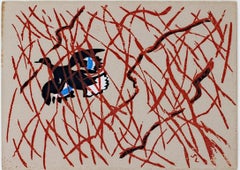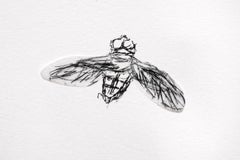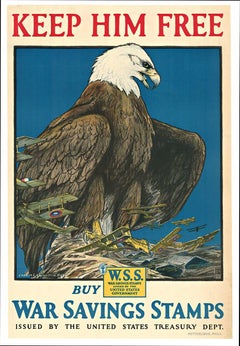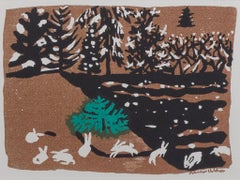Schomer Lichtner Animal Prints
Schomer Lichtner was well known for his whimsical cows and ballerinas and abstract imagery. He and his late wife, Ruth Grotenrath (1912–88), both well-known Wisconsin artists, began their prolific careers as muralists for WPA projects, primarily post offices. Lichtner also painted murals for industry and private clients. Lichtner was a printmaker and produced block prints, lithographs and serigraph prints. His casein (paint made from dairy products) and acrylic paintings are of the rural Wisconsin landscapes and farm animals. He became interested in cows when he and Ruth spent summers near Holy Hill in Washington County. According to David Gordon, director of the Milwaukee Art Museum, Lichtner had a tremendous joie de vivre and expressed it in his art.
Lichtner was nationally known for his whimsical paintings and sculptures of black-and-white-patterned Holstein cows and elegant ballerina dancers. Lichtner also painted all sorts of combinations of beautiful women, flowers and country landscapes. The late James Auer, former Milwaukee Journal Sentinel art critic, said that his art eventually "exploded into expressionistic design elements with bold, flat areas of color and high energy that anticipated Pop Art." Auer went on to describe Lichtner’s work as full of "wit, vigor and virtuosity." In as early as 1930, Lichtner’s work was shown at the prestigious Carnegie International Exhibition in New York and museums throughout the Midwest. As a student, he was a protégé of another icon of 20th century American art, Gustave Moeller.
Lichtner and his wife, Ruth, are celebrated as Milwaukee’s first couple of paintings and are regarded as major Wisconsin artists. Lichtner’s impressive production, perseverance, longevity and positive approach to his life and art made him and his work distinctive and much loved by his many admirers. His work is currently represented in collections at the Milwaukee Art Museum, the John Michael Kohler Art Center, the West Bend Museum and in the collections of many individuals. He continued to amaze and create with his whimsical paintings of ballerinas and cows. The Milwaukee Journal Sentinel's Auer referred to Lichtner as the artist laureate of Milwaukee. Lichtner was the official artist of the Milwaukee Ballet and was a recipient of the 2006 Wisconsin Visual Artist Lifetime Achievement Award. He passed away on May 9, 2006 at the age of 101.
1940s American Modern Schomer Lichtner Animal Prints
Screen
1990s American Modern Schomer Lichtner Animal Prints
Paper, Lithograph
1910s American Modern Schomer Lichtner Animal Prints
Lithograph
1950s American Modern Schomer Lichtner Animal Prints
Lithograph
1930s American Modern Schomer Lichtner Animal Prints
Lithograph
1980s American Modern Schomer Lichtner Animal Prints
Offset
1960s American Modern Schomer Lichtner Animal Prints
Lithograph
1910s American Modern Schomer Lichtner Animal Prints
Lithograph
James Henry DaughertyOriginal "The Ships Are Coming" vintage American poster with an Eagle., 1917-18
1910s American Modern Schomer Lichtner Animal Prints
Lithograph
1940s American Modern Schomer Lichtner Animal Prints
Lithograph
1940s American Modern Schomer Lichtner Animal Prints
Lithograph
1930s American Modern Schomer Lichtner Animal Prints
Screen
1950s American Modern Schomer Lichtner Animal Prints
Lithograph
1940s American Modern Schomer Lichtner Animal Prints
Screen



